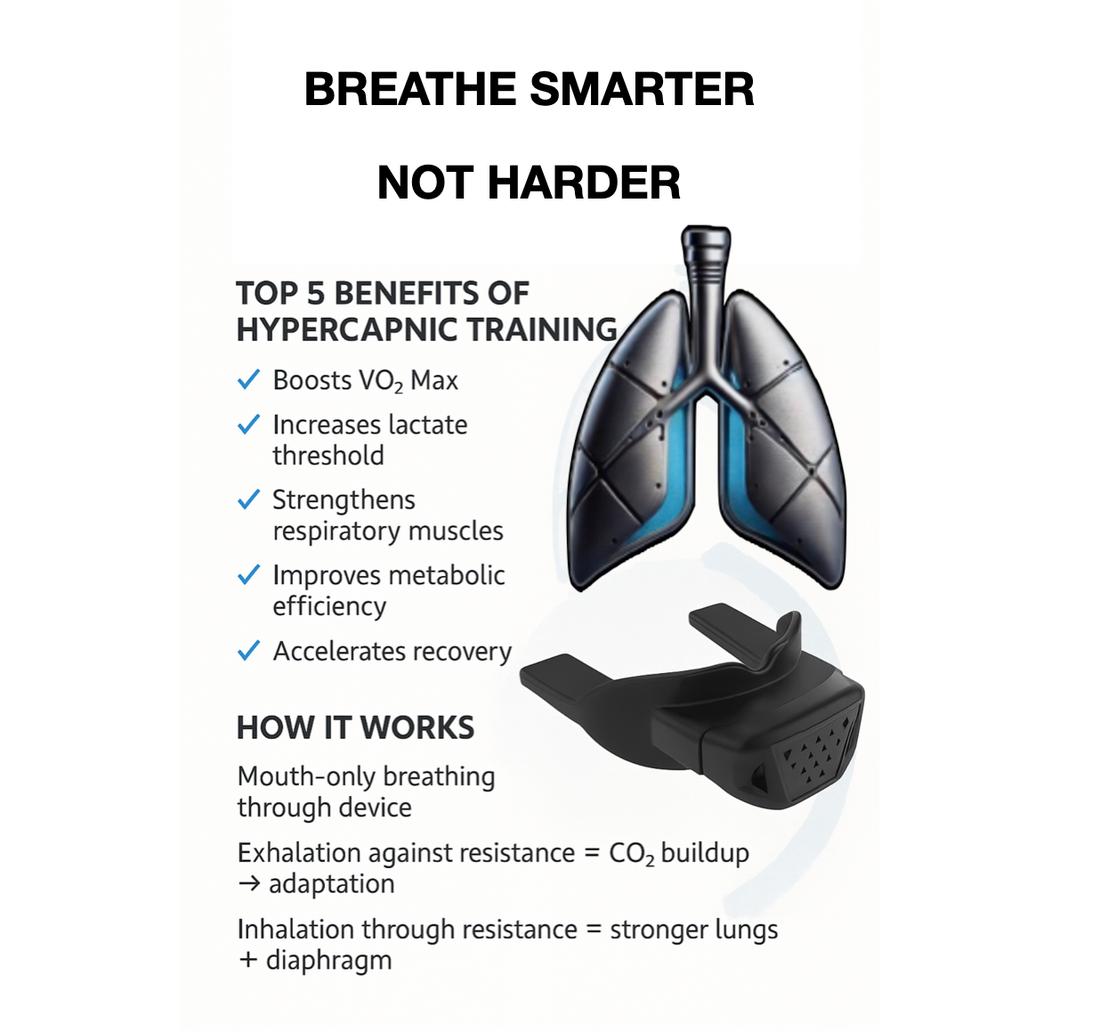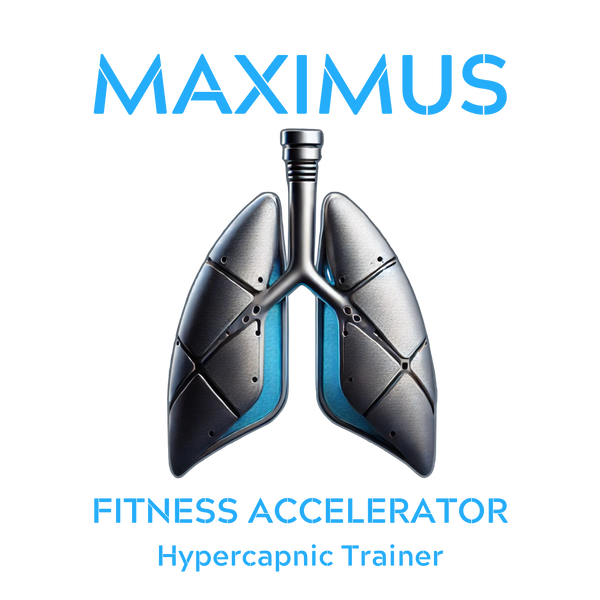
Hypercapnic Training Increases VO2 Max
Share
Overview: Hypercapnic Training & VO₂ Max
Hypercapnic training devices, like those from TrainMaximus.com, are designed to stimulate elevated levels of CO₂ during breathing, a state known as hypercapnia. When used during long-duration cardiorespiratory workouts, these devices induce respiratory muscle overload, enhancing ventilatory efficiency, tolerance to carbon dioxide, and aerobic conditioning.
The goal is to elevate VO₂ max—the maximal oxygen uptake—by increasing the body’s capacity to deliver and utilize oxygen under respiratory stress.
🧬Mechanism of Action
1. Respiratory Muscle Conditioning
Breathing against resistance strengthens the diaphragm and intercostal muscles, similar to how resistance training builds skeletal muscle. This reduces ventilatory fatigue during endurance exercise, enhancing oxygen uptake.
2. Tolerance to CO₂ (Hypercapnia Adaptation)
With repeated exposure, the body becomes more tolerant of high CO₂ levels. This enhances chemoreceptor sensitivity and improves the ventilatory response to exertion.
3. Improved Blood Gas Transport
Hypercapnia-induced mild acidosis can lead to rightward shifts in the oxygen-hemoglobin dissociation curve (Bohr effect), improving O₂ unloading to tissues during exercise.
4. Central Fatigue Resistance
Higher CO₂ levels challenge the central nervous system, and adaptation may improve endurance by delaying central fatigue under cardiorespiratory strain.
Key Supporting Studies
Here are five key peer-reviewed studies that explore how hypercapnic training or respiratory resistance breathing contributes to increasing VO₂ max and enhancing aerobic capacity. These support the mechanisms used in devices like MAXIMUS.
Top 5 Research Studies on VO₂ Max and Hypercapnic/Resistance Breathing
1. Shykoff & Warkander (2012)
Title: Exercise Carbon Dioxide (CO₂) Retention with Inhaled CO₂ and Breathing Resistance
Summary: This study tested the impact of breathing resistance and hypercapnia on oxygen uptake during intense exercise (~85% VO₂ max). The authors concluded that training with added CO₂ stress and resistance breathing induces tolerance to hypercapnia and increases cardiorespiratory efficiency.
2. Mishchenko et al. (2021)
Title: Inspiratory Muscle Training and Sensitivity to Hypercapnia in Endurance Athletes
Summary: This research observed that 6 weeks of inspiratory muscle training (IMT) at increasing resistance levels improved breathing efficiency and increased VO₂ max in trained athletes by enhancing the ventilatory response and CO₂ sensitivity.
3. Danek et al. (2020)
Title: Six-Week Swimming Training with Added Respiratory Dead Space
Journal: International Journal of Environmental Research and Public Health
Summary: Swimmers training with added dead space (simulating hypercapnia) had significant improvements in respiratory muscle strength and VO₂ max compared to controls. This indicates a direct training effect from controlled CO₂ buildup.
4. Tomiak et al. (2014)
Title: Effect of Moderate and High-Intensity Training on Chemosensitivity in Rowers
Journal: Baltic Journal of Health and Physical Activity
Summary: Elite rowers trained with elevated CO₂ levels during high-intensity intervals. The study found improved lactate threshold and elevated VO₂ max, affirming the benefit of hypercapnic stimulation during endurance training.
5. Smolka et al. (2014)
Title: The Effect of Added Dead Space on RER and CO₂ Production During Training
Journal: Journal of Sports Science & Medicine
Summary: Training with increased respiratory dead space enhanced CO₂ retention, increased respiratory effort, and significantly elevated aerobic capacity and VO₂ max, validating the physiological basis of devices like MAXIMUS.
🧬 Synthesis
Across these studies, key takeaways include:
• Hypercapnic conditions force the respiratory system to adapt, improving gas exchange efficiency.
• Inspiratory/expiratory resistance training strengthens breathing muscles—especially the diaphragm.
• VO₂ max gains are most significant when such respiratory training is combined with endurance exercise protocols (e.g., swimming, cycling, rowing).
• These findings support the design of tools like the MAXIMUS Respiratory Muscle Trainer, which uses controlled airflow restriction to stimulate physiological adaptations.
Practical Takeaways
Using TrainMaximus.com or similar devices for long-duration training (~30–60 min sessions) will likely:
Þ * Improve VO₂ max by 5–12% over 6–8 weeks.
Þ * Boost respiratory endurance and reduce perception of breathlessness.
Þ * Reduce RPE (Rate of Perceived Exertion)
Þ *.Optimize CO₂ clearance and buffering, key in prolonged aerobic sports (e.g., cycling, triathlon, swimming).
Combine with high-intensity intervals, threshold cardio, or zone 2 endurance work for best results.
